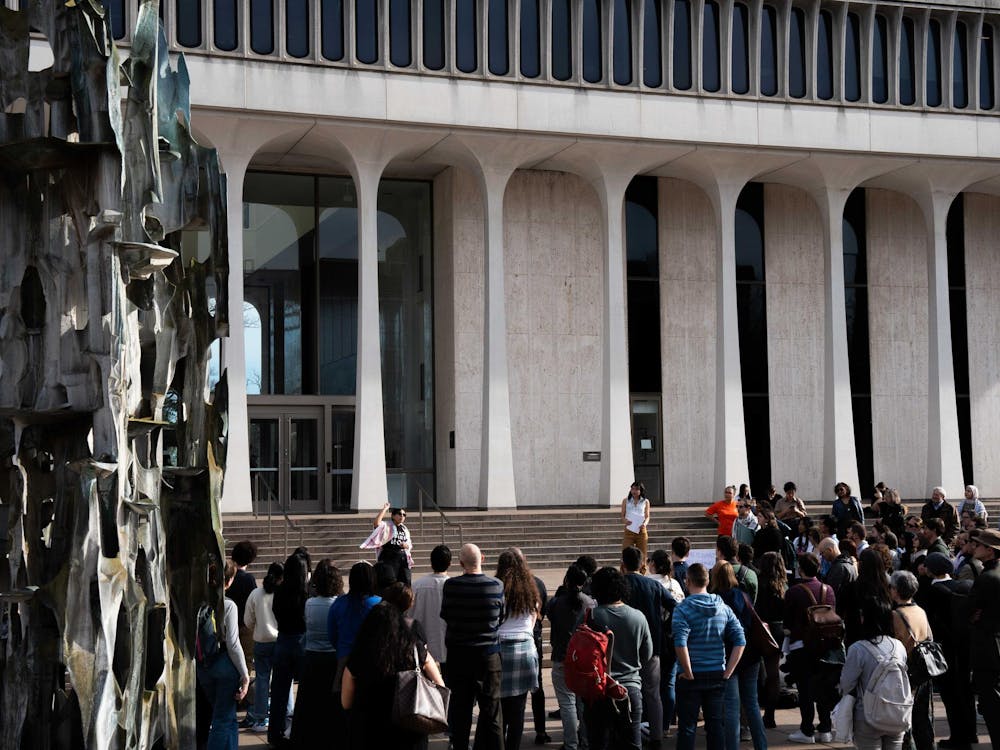On Friday, the student body will take part in one of the most important events of the year: room draw. To a certain extent, your upcoming year is defined by this process; whom you choose to share a living space with — if anyone — has a huge impact on both your academic and social life. While some can make the argument that a poor living situation can be mitigated by simply not using your room, that logic only goes so far. There is a reason why students spend hours together with their draw groups, staring anxiously at a spreadsheet while room after room disappears, hoping that they have an opportunity to get a living situation they are satisfied with.
That process will be even more complicated, anxious, and even tainted, by the biased “randomization” process of this year’s draw times. Students who were already nervous will now also be frustrated by the fact that the system was never in their favor to begin with. Even more agonizing was the recent acknowledgement to the failures of the system by the University, which — while attempting to be a fair consolation — only made the situation worse by being a failed response to the inherent problems.
Let me first acknowledge that I was one of the lucky ones; my draw time went from middle-of-the-road within the juniors to a time on the first day this year. I guess that I was one of the students that were affected in a positive way. Yet, while there were some that made off with what now looks like a king’s ransom, many more students are left in a worse position than before. Somehow, this “random” process screwed them over: twice.
Then, the University had to pour salt in the wound with its email that was sent out on Thursday. This was certainly a case of bureaucratic administration attempting to solve a problem, but because it did not recognize what was wrong in the first place, it was never going to solve it in an effective manner. Honestly, I doubt that the University would have even said anything had there not been as much uproar from the student body as there has been.
Perhaps the most frustrating component about its response was that it had the audacity to try and say things are not as bad as they seem. At one point in the email housing director Dorian Johnson wrote, “The roughly 220 students directly affected are all rising seniors. Overall, their draw times are improved from last year because of their seniority on campus.”
Frankly, there would be an even larger problem if times did not improve at all. Yet here is a perfect example of where the problem is not correctly identified. Instead of concerning themselves with the idea of relative room draw positions not being fair, it tries to address the issue of actual positioning; of course, there isn’t a problem there, so it is an easy response for the University. But the failure to acknowledge what students are actually upset about makes the rest of the email hard to read.
Next, the University justifies its decision to move ahead with room draw because “the room draw process is already well underway and the end of the semester is near.” From a logical standpoint, I empathize with the logistical nightmares that this would cause and can at least respect the decision. However, the University could do better than throwing a “there’s nothing we can do” response to this problem. Consider that this issue was brought to its attention on April 8; with nearly three weeks to figure this problem out, why was no action taken earlier?
Furthermore, while room draw is underway, it has not begun for upperclass students, specifically the seniors, who are the ones affected by this problem. Upperclass student draw would only be delayed as a result of a reshuffling; there would be no direct impact on people who have already chosen rooms. Finally, the end of the year is still a month away; if this were a big enough problem in the University’s eyes, they could very well implement and execute a solution that would be finished well before everyone leaves for the summer.
Instead, the solution is to offer everyone who was affected $1,000 off their housing bill. Once again, this is a conciliatory gesture that should be appreciated — after all, the University could have done nothing — but, again, the solution is not as fantastic as it is perceived. Specifically, consider students who are on some sort of financial aid policy. While many financial aid packages do not impact the cost of housing, there are some that do.
Thus, is the $1,000 stipend irrelevant to these students? Will they ever see that money or will their financial aid package just go down by an equal amount? Furthermore, the University is not giving out $1,000 to potentially 220 students, it is simply not receiving that money as part of next year’s profit. All it has to do is admit four extra students in the Class of 2024 at the sticker price, and it makes its money back. For the University, it’s like nothing ever happened. But for every student who was impacted, the effects are clearly detrimental, something that a discounted housing rate may not be able to fix.
Unfortunately, no system will ever be completely fair; if we are to move on, we have to recognize that a change to the system, or even a different solution, will be fair to everyone. That being said, there are ways to respond to a crisis more effectively, and this was not one of them. In a way, the room draw response reflects a larger issue of the administration being out of touch with student concerns. Our interests are never going to be completely aligned, but when the student body has a legitimate gripe, it should be up to the University to handle it in a way that at the very least makes students feel better about the situation. Unfortunately, I highly doubt that is the case here.








